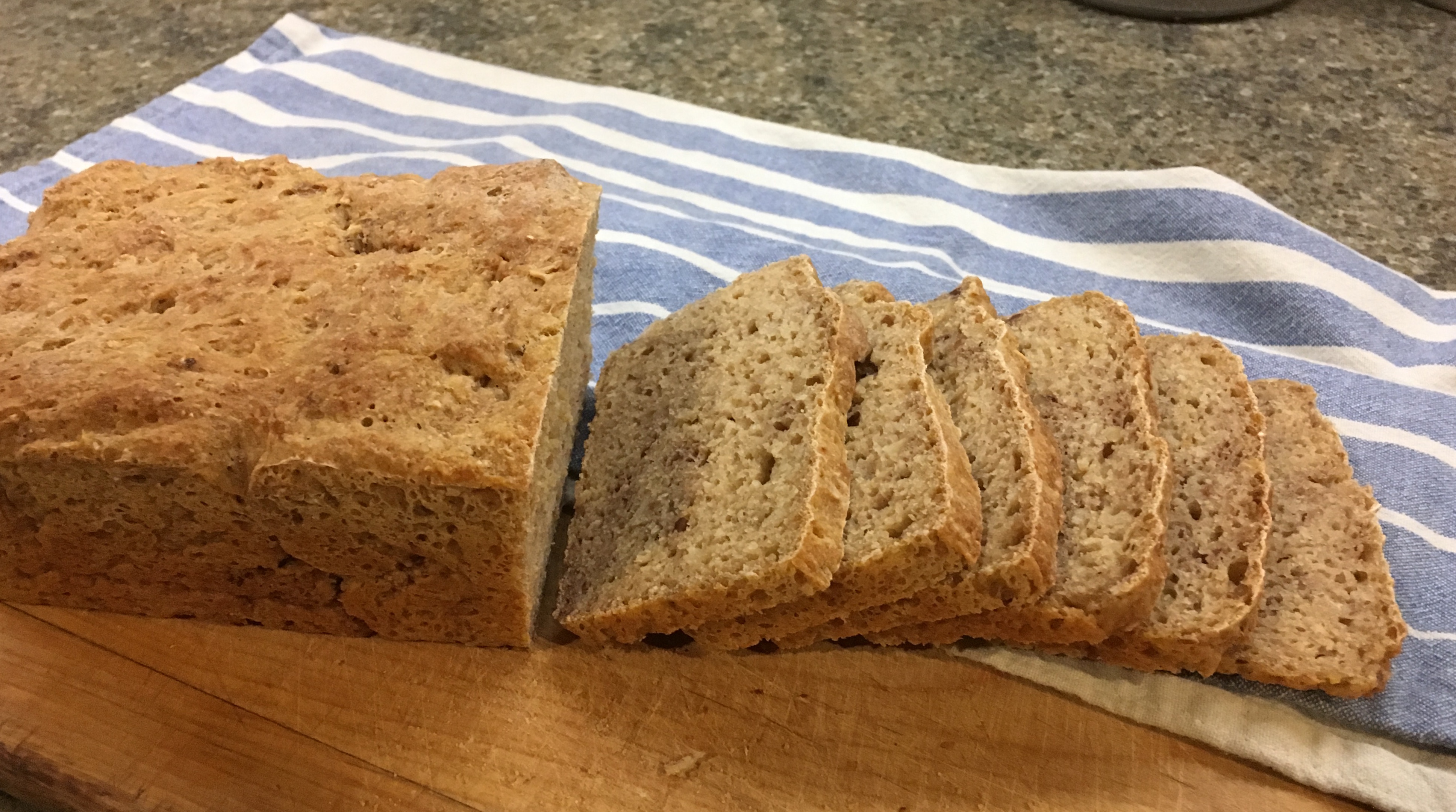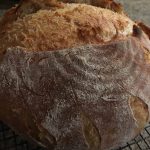
At some early point in my baking history, I asked my mom if we could bake bread. Not quick bread mind you, yeast bread. Recall, bread on the farm meant whole-wheat from the stone-grinding mill, baked by the local bakery. Quaint establishments in today’s culture.
I assumed that my mother would know how to bake bread. She knew how to produce all goods from the kitchen, didn’t she? Well, she not only didn’t know how to make bread, the very thought caused her to quake in her house slippers. “B-b-bread? But that uses YEAST!” I was undeterred, and luckily, my grandmother provided Mom with an escape route-this quick oatmeal bread recipe, akin to an English muffin type bread. It’s humble batter bread, simply spooned into a pan, raised, and baked. I could make this independently, it made wonderful toast, and kept me happy for a minute.
Eventually I pushed Mom further, and we baked a loaf of plain white bread, a huge sacrifice for her, knowing she was missing all that whole grain nutrition. When it became obvious to her that bread was my calling in the world of home baking, she wisely bought me a breads recipe book, and pretty much just let me loose. There were successes; there were flops, but every effort taught me something I didn’t know before.
Today, I am an avid sourdough (aka levain) baker. While I’ve documented my personal difficulties with wheat, baking with natural yeast makes it possible for me to eat any kind of wheat flour I want. The long, slow fermentation with natural yeast breaks down the substances my gut finds challenging, allowing me to enjoy artisan quality breads with abandon. Any time I want! As most restaurants serve standard commercial loaves made with quick rising yeast, I have been known to tuck a few slices of well-wrapped bread into my purse when we eat out, to be snuck surreptitiously onto the bread plate…
My daily loaf now looks something like this:

and I bake this loaf several times a month. An additional version studded with dried fruit and nuts is a close friend with cheeses of all types, served for breakfast. Levain baking requires commitment. That unassuming natural yeast starter in the fridge requires weekly feeding, and ideally weekly use, because a portion of the starter must be discarded each time it is fed. Raised with the farm mentality, I can’t throw that discard away; hence we eat sourdough everything-pancakes, buckwheat cakes, biscuits, scones, etc. etc.
Having now convinced you that my mother’s instinct to avoid bread baking was valid, let’s get back to that easy oatmeal bread! I hadn’t baked it for years when I stumbled upon the recipe in my box. My grandmother was decidedly not a nutrition minded cook, or baker. She also lived on coffee, cigarettes and bedtime shots of gin, which gives you some idea of her life philosophy. So it was no surprise that this recipe needed a few tweaks to make it healthier. Some of that flour needed to be whole wheat and the sugar! Who knew one could pack that much sugar into one loaf of bread? No wonder I loved it as a kid…
If you’ve never baked bread, this is the place to start. Who knows? You too may become addicted to bread baking, or you might just have decidedly delicious toast once in a while.
Grandma's Oatmeal Bread
Ingredients
- 1 cup rolled oats
- 1 ¾ cups boiling water
- 2 tablespoons maple syrup
- 1 ¼ teaspoons salt
- 2 ¼ teaspoons instant yeast
- 1 ¼ cups white whole wheat or sprouted whole-wheat flour
- 1 ¼ cups all-purpose flour
- 1 tablespoon ground flax meal
Instructions
- Mix oats, boiling water and maple syrup; set aside to cool.
- In large bowl, mix the yeast, flours, salt and flax meal. Stir in the cooled oat mixture and stir into a stiff batter. Cover and let rise until doubled, around an hour and a half. Stir down and spoon into a greased 8 ½ x 5-inch loaf pan, spreading evenly. Pre-heat the oven to 350 degrees F. Cover pan and let rise until batter is just above the pan rim. Bake for 45 minutes, until browned and edges are pulled away from the sides of the pan.


Love